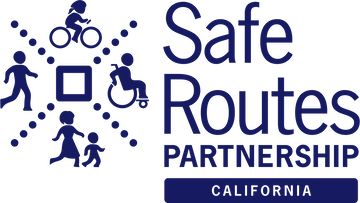The deadline for ATP Cycle 6 passed on June 15. 434 applications were received, 20 fewer than in Cycle 5. That drop is much smaller than the decrease of 100 from Cycle 4 to Cycle 5, however, so we are cautiously optimistic that the size of the applicant pool is beginning to stabilize. According to the California Transportation Commission’s preliminary analysis, the following statistics stand out:
- The total requests surpassed $3 billion for the first time, ($3.11 billion), nearly $1 billion more from the total requests in Cycle 5.
- The vast majority of the applications and the dollars requested are for projects claiming disadvantaged community status (402 applications totalling $2.98 billion).
- More than half of the applications and funding request (256/$1.8 billion) are for Safe Routes to School projects.
- Continuing trends that began emerging in Cycle 4, costs for projects are skyrocketing: the largest request was for $67.6 million and 15 applications requested more than $30 million.
Following the heartbreak last fall of Governor Newsom’s proposed $500 million augmentation to ATP Cycle 5 being blocked in the legislature, we were heartened when a $1 billion augmentation was finally approved this spring. At first, we were hopeful that projects that would have benefitted from the Cycle 5 augmentation could still be funded. However, CTC staff will recommend to the Commission at the August meeting that the full augmentation go to Cycle 6. We now support that decision, for two primary reasons: first, in the two years since the Cycle 5 deadline, costs for those projects have significantly increased, which would make funding them retroactively now logistically difficult without revised scopes. Second, the large majority of applications that would have benefited from the Cycle 5 augmentation (at least in the statewide component) reapplied this cycle, and unless their scores drop dramatically, they are likely to receive funding this time.
That is because, when the $1 billion is added to the roughly $650 million in the previous fund estimate, there will be enough money in Cycle 6 for a third of the total funding request, and the CTC estimates that, if trends from previous cycles hold, the threshold score for Cycle 6 will be around 86 - extremely and overly competitive, certainly, but a significant improvement from Cycle 5’s threshold score of 92.
Congratulations to New CTC Commissioner Adonia Lugo
We were delighted with Governor Newsom’s appointment this spring of Adonia Lugo to the California Transportation Commission. Adonia is a longtime partner and ally of ours, and founder of the Untokening and People for Mobility Justice. Her writings, including the book Bicycle/Race have deeply influenced our work, and we are ecstatic that her relentless advocacy for healthy transportation in marginalized communities will be heard in the agency that controls our state’s transportation spending.
An Update on the SHOPP
Following Caltrans’ release of its Complete Streets Policy in the winter, the CTC approved new guidelines for the State Highway Operations and Protection Program (SHOPP) that capture many of the improvements to the program that we have advocated for over the past several years:
- Caltrans shall incorporate Climate Action Plan for Transportation Infrastructure (CAPTI) strategies as well as the Caltrans Equity Statement in the development and implementation of the State Highway System Management Plan to the maximum extent feasible while meeting the legal, statutory, and operational requirements of the State Highway System.
- Caltrans shall assign an editor to review and ensure the use of consistent, meaningful, and descriptive language across all projects. (until now, the descriptions for many projects or elements thereof relied principally on vague words like “improve” when referring to activities such as widening lanes.)
- CalTrans will add additional pull-down menu selections in their online project workbook, allowing stakeholders to analyze each cycle more easily. These pull-downs would have the current, active SHOPP (2022) and a tab for the draft SHOPPs when they are proposed (the next being 2024).
- Project Initiation Documents (PIDs) for all new projects proposed for programming in the SHOPP shall be made available to the public. This would be a great compromise since the PIDs would include all necessary information, including the Complete Streets Decision Documents, to evaluate their decision-making. This way, we and communities who have been pressing for bicycle and pedestrian improvements on the State Highway System will be able to track down exactly how decisions on including walking and biking safety features in SHOPP projects were made.
To cap off Complete Streets-related news, Caltrans released its Complete Streets Action Plan earlier this month. We’re still combing through it, but will include our thoughts in our next E-News.


